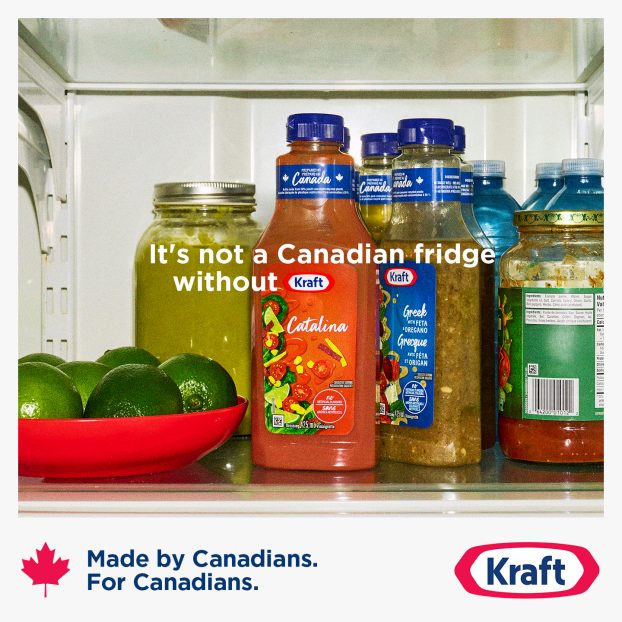At that strange place where branded content meets convergence, there’s bound to be confusion. There’s been a lot of talk about what constitutes both, but when it comes to actually designing and executing a plan, there’s nowhere to stop and ask for directions. In the case of Cadillac’s ‘Innovating Tomorrow’ project, when the rubber hit the road, it meant mapping out a whole new model for advertising.
The final plan consisted of the largest single-source converged media buy in Canadian history, including three half-hour shows airing on CTV, TSN, Discovery and Report on Business Television; 17 vignette interstitials airing in rotation on those same channels; an innovatingtomorrow.com Web site; three supplements in the Globe and Mail and articles in ROB magazine. But as with many journeys, getting there was half the fun.
The goal
It’s no secret that the Cadillac brand has been struggling as its core group of buyers ages, because to date the brand hasn’t been able to stir up desire in the next generation of successful, status-conscious consumers. Oshawa, Ont.-based General Motors is trying to change that with a whole new line of cars, anchored by the 2003 Cadillac CTS. Current messaging is attempting to attract a new type of buyer by repositioning the brand as cutting-edge, powerful, technology-rich and sophisticated.
The strategy
The idea behind the project was to cut through the clutter of traditional advertising by developing relevant content that would appeal to the brand’s new target demo, then place regular Cadillac advertising and on-air billboards within that content.
The plan, originally developed by Toronto-based M2 Universal president Hugh Dow and his team, had its roots in three ‘pillars’ of communication. By building TV shows, Web pages and newspaper features around these pillars, M2 ensured that the content would be relevant to the target demo and echo the Cadillac brand equities – without the risk of turning off audiences with blatant pitches written into the content itself.
The first pillar, ‘Leadership in technology,’ is a nod to such high-tech toys as a voice-activated GPS navigation system available on new Cadillac models. The second, ‘leadership in design,’ stems from the ‘sheer planes’ and ‘dramatic curves’ of the new CTS. The third and final pillar, ‘leadership in business,’ harks back to the brand’s status symbol roots.
The plan was also unique in that the marketer purchased both media and content from a single source – Toronto-based Bell Globemedia – at a pre-determined bundled rate.
The execution
Kevin Shea, group EVP, convergence at Bell Globemedia, acted as ‘choirmaster’ on the production and media co-ordination side. He says it was a massive undertaking, but then there was a big payoff too.
‘The budgets certainly got the attention of everyone here,’ Shea says, adding that he can’t divulge the exact amounts. ‘I still think that to this day, it is the most elaborate campaign undertaken by one single media company. I’m somewhat familiar with what the budgets have been with the other media groups, and I believe that this is the most substantive.’
Rather than using in-house writers and producers, Shea decided the easiest route was to contract all of the actual production to outside companies.
Toronto-based Q Media Solutions, a television production company with a background in corporate work, was hired to produce the three half-hour shows, each based on one of the communication pillars, along with interstitial excerpts. Toronto-based Formula Productions, a freelance writing firm, was hired to write the pieces for the Globe.
Q Media producer and senior partner Dorothy Engelman received the first contract Jan. 15, just two months before the first show was to air, so she had to work fast. And while the total budget Bell Globemedia received for the project may have been substantive, she describes the portion that trickled down to her company as ‘reasonable’ but ‘low end’ for that type of project.
But the more immediate challenge was coming up with an approach that made the abstract topics relevant to the desired audience.
‘We wanted to do something driven by people and their stories,’ Engelman recalls of the first show, built around the technology pillar, ‘so rather than approaching the technology of some new human genome project – something that’s very hard for people to grasp – we wanted to look at how technology is affecting the way we work, live and play. That was the basis for how we handled the editorial content for all three shows.’
Show number two followed with profiles of well-known Canadian designers, such as Karim Rashid, and the third episode, which aired May 12 on CTV, was based on ‘leadership in business’ and looked at ‘remarkable entrepreneurs who have the imagination and the savvy to create the tools of tomorrow.’
As well as producing each show, Engelman had to work closely with Bell Globemedia’s Web and print teams, providing them with access to subjects for their coverage, and checking in with them to ensure the direction she was taking would work equally well in print and online.
Q media was under contract with CTV, so Engelman didn’t retain any rights or have access to government funding for production, but she says that she had no problems with Cadillac execs looking over her shoulder. The work was clearly separated into programming the client didn’t have approval on – namely the three half-hour shows and their interstitial offspring – and programming the client did have approval on, which consisted of eight additional interstitials assembled out of interviews with General Motors executives.
The results
While the interstitials will continue running through the rest of the year, and a repeat of the TV shows is planned for the fall, the first stage of the project is just winding down. The big question now, after the millions General Motors has poured into the project, is did it work? A simple question, but when you’re in uncharted territory, even figuring out just how you would measure success is a problem.
Still, Dow says that there is a tracking method in place, based on custom research conducted among the target demo, and General Motors will be carefully monitoring the results. Just don’t expect GM to share them, he says.
Those results aren’t in yet, but there’s no doubt that they will play a key role in discussions on whether GM will stick with the branded content approach – Shea for one says he’s optimistic about year two and three – or go back to traditional advertising.
‘At this point in time we can’t really know whether what we’ve put together is successful,’ says Cathy Cooper, GM’s advertising manager for Chevrolet/Oldsmobile/Cadillac. ‘But time will tell.’























